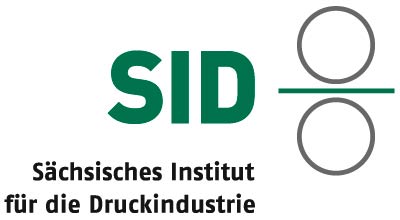Testing at Substrates
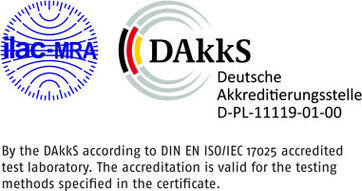
In the SID accredited test laboratory varied tests at materials used for printing can be carried out.
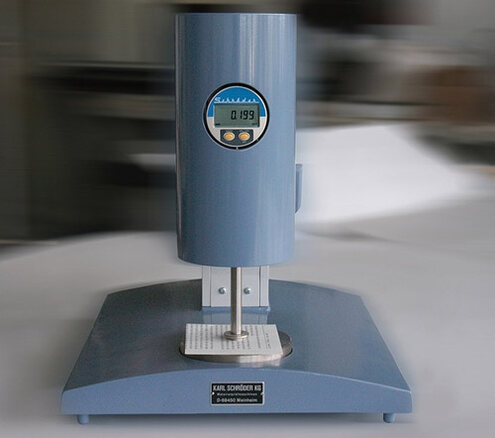
The basis weight in g/m2 according to ISO 536 is measured with a precision scale.
The substrate thickness according to ISO 543 is determined with a thickness gauge with a resolution in the micrometer range.
The specific volume of a substrate is calculated as the quotient of the thickness and the mass per unit area.
The colour of the substrate is one of the most influential factors in the final printing result. Different methods are used to determine it, e. g. measuring the CIE L*a*b* values according to DIN 6174, determining the brightness according to ISO 2470-3 with a remission spectrometer at a wavelength of 457 nm, determination of the reflectance factor according to DIN 53145 with an edge filter at 395 nm and 420 nm or the CIE whiteness according to ISO 11475 at outdoor daylight (D65/10°).
The determination of the gloss is different in the paper industry and the printing industry. To compare the gloss of a substrate with the gloss of the printed image, it is recommended to use reflection measurement angles of 20°, 60° and 85° according to ISO 2813.
As a measure of the absorbency of a substrate, the oil absorption according to Cobb/Unger can be determined according to DIN 53132. It should be taken into account that top and bottom of the paper may behave differently.
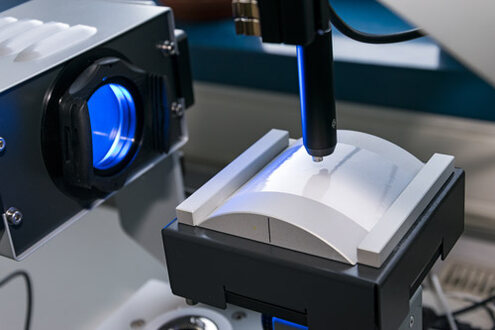
In order to characterize the wettability of various substrates, the contact angle is measured against defined liquids (e. g. water, methylene iodide). This gives a statement about the surface tension and thus about the wettability of the substrate with various media, such as printing inks. In a similar way, the surface tension can be determined with test inks in specified increments.
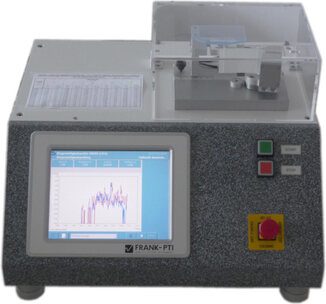
Bending stiffness is the resistance of a paper strip to a bending force. This property is particularly important for the transportation of sheet material or in the manufacture of packaging. It is determined in accordance with DIN 53121 using the 2-point method in accordance with the bar method by bending a paper strip of defined length and width and measuring the force required therefor at a certain angle. It should be noted that the bending stiffness, e. g. of cardboard, can be very different in the lengthwise and crosswise directions.
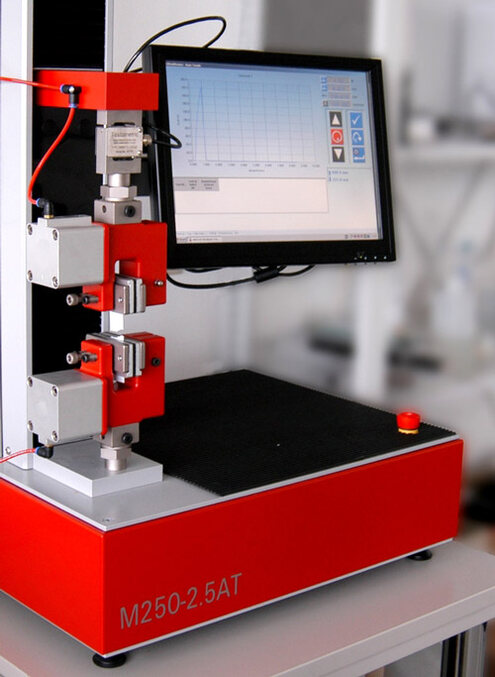
A tensile testing machine is used to test the strength of substrates or composite materials. This allows the tensile strength, i. e. the force required to tear a strip of defined width, and/or the stretchability and elasticity to be determined.
The tensile testing machine can also be used to determine the crush resistance of folding cartons, to measure the splitting strength of paperboard, to measure the peeling force of material composites (e. g. film sandwiches, laminated materials) in accordance with DIN EN 28510 and to determine the residual strength in the fold of heatset products up to paper breakage in finishing.
The coefficient of sliding friction of a substrate is of interest if problems occur during transport due to excessive or insufficient adhesion of the material to each other. This test can also be used to test the correct use of an anti-slip varnish in packaging applications. A sliding friction measuring device according to DIN EN ISO 8295 is used for testing.
Testing at Substrates
Your contact partners:
Dipl.-Ing.
Beatrix Genest
Tel: +49 341 25942-28
Dipl.-Ing. (FH)
Carolin Sommerer
Tel: +49 341 25942-23
